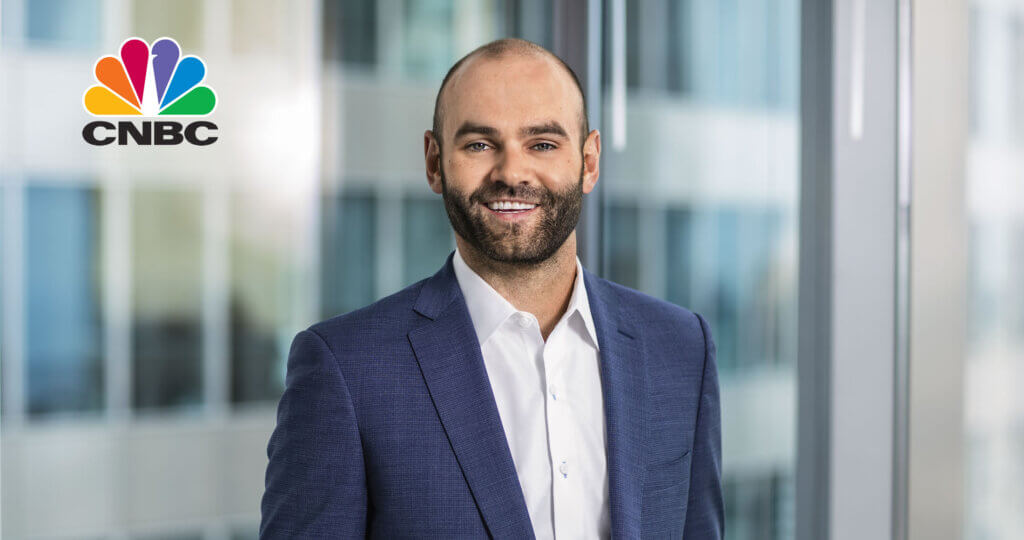Oakmark Equity and Income Fund - Investor Class
Average Annual Total Returns 03/31/15
Since Inception 11/01/95 10.89%
10-year 8.18%
5-year 9.00%
1-year 6.02%
3-month 0.91%
Gross Expense Ratio as of 09/30/14 was 0.74%
Past performance is no guarantee of future results. The performance data quoted represents past performance. Current performance may be lower or higher than the performance data quoted. The investment return and principal value vary so that an investor’s shares when redeemed may be worth more or less than the original cost. To obtain the most recent month-end performance data, view it here.
Quarter Review
U.S. stocks showed little direction in the March quarter. In fact, in the second half of the quarter the market went 28 trading sessions without gains on back-to-back days, and this tied the record for that somewhat irrelevant statistic. The return for the Equity and Income Fund in the quarter was 1% while the Lipper Balanced Fund Index, the Fund’s performance benchmark, returned 2%. Our decision to keep the Fund’s fixed income duration very short contributed to the Fund’s shortfall versus the benchmark. For the fiscal year’s six months, the Fund returned 5%, and the Lipper Balanced Funds Index return was 4%. The annualized compound rate of return since the Fund’s inception in 1995 is 11% while the corresponding return to the Lipper Index is 7%.
Top contributors for the quarter were UnitedHealth Group, TE Connectivity, General Motors, Lear and Foot Locker. Bank of America, National Oilwell Varco, Union Pacific, Oracle and Glencore detracted most from return. For the first six months of the Fund’s fiscal year, UnitedHealth Group, CVS Health, TE Connectivity, General Motors and Lear led the contributor list while National Oilwell Varco, Glencore, Bank of America, Dover and Ultra Petroleum detracted. Weak commodity prices have helped to pull down the shares of four of the five detractors.
Activist or Acquisition?
In the recent period, companies that have attracted activist attention as well as those that have announced significant acquisitions have both tended to outperform. This is a curious outcome for a couple of reasons. First, throughout our careers, we had grown accustomed to seeing the price of an acquirer drop following the announcement of a deal because investors often perceive acquisitions as diluting a company’s value. Not only is it strange that acquiring companies now enjoy price lifts when they announce deals (e.g., UnitedHealth on the announcement of its deal to purchase Catamaran), but it’s odder still that it comes at a time when activism is also causing prices to rise. Activists often agitate for the exact opposite of acquisitions: either an outright sale of the targeted company or divestment of business units, believing such actions can “unlock” value.
In a diversified portfolio of equities, like the equity portion of Equity and Income Fund, it is almost to be expected that there will be Fund holdings that demonstrate these factors. Two of the Fund’s automotive industry holdings (General Motors and Lear) have attracted activists, and Bank of New York Mellon has added a representative of an activist firm to its board. General Motors recently responded to an activist group with a plan to return cash to shareholders through share repurchase, and Lear had previously undertaken this action. Fund holdings have been less busy on the acquisition front, with the aforementioned UnitedHealth deal as the only recent example.
Obviously we like it when prevailing market currents carry along our holdings, but we worry that in an otherwise dull period investors are overreaching for investable concepts. Although the market’s previously negative reactions to acquisition announcements was probably too extreme, today’s judgment that acquisitions will almost always produce enhanced profitability seems too generous. Concerning activist investors, we welcome work that brings price and value together without impairing future value growth. Our job is to discriminate between activists who look to enhance long-term business value and those who seek merely to extract short-term profits.
Transaction Activity
During the quarter, the Fund initiated two new equity positions while eliminating three. The net effect of these transactions was to decrease the equity allocation by 1% with proceeds used to increase the corporate bond allocation.
We purchased shares of T. Rowe Price Group, the investment management company. As a significant player in our business, we have long admired T. Rowe but only recently perceived the share price to offer opportunity. Key to the franchise is the company’s investment culture, which has sustainably generated commendable investment performance and enabled T. Rowe to establish a strong position in the defined contribution/401(k) market. In our view, the company has a solid balance sheet with over $3 billion in cash and investments with no debt. We also like that management has demonstrated good stewardship of capital through opportunistic share repurchases (i.e., during periods when the share price was weak and trading at a discount to our estimate of intrinsic value).
Our second new purchase was Precision Castparts Corp. (PCP), a manufacturer of complex metal components and products for aerospace, power generation, and general industrial applications. PCP’s long-tenured CEO has helped to develop what we believe is an outstanding corporate culture that relentlessly pursues operating efficiencies. For many years, the company’s stock traded at a significant premium to aerospace and industrial companies, but recent underperformance has caused it to sell at a discounted valuation. We believe the current valuation does not adequately reflect PCP’s organic growth prospects and its ability to add value through acquisitions. PCP’s unique technical and process capabilities coupled with its efficiently run operations should allow this best-in-class company to continue generating above-average margins.
Stock eliminations during the quarter were FedEx, Illinois Tool Works and Scripps Networks Interactive. We purchased shares of the first two companies in 2012, and both contributed to the Fund’s returns. Scripps also contributed, but over a much longer 10-year holding period. During that time, which includes the financial crisis, much has happened at Scripps, including a corporate name change and several diversifying acquisitions. Through it all, the strength of the core cable television channel franchises was sufficient to grow shareholder value. With a rapidly changing media environment, however, we have begun to question if the increasing fragmentation of media viewership will limit future growth opportunities in this sector.
The Most Hated Rally in History
A Financial Times article on March 2 examined the post-financial crisis bull market and contained the phrase we have used to title this section.1 The article discusses a theme we have often stated, “…that many investors have simply not believed in a stock market rally fueled by central banks’ easy money policies.” Or, according to Nicholas Colas, chief market strategist of Convergex, “There is a belief that the market rally has…not [been supported] by organic growth and rising revenues.” The article also describes the difficulty investors have had in distinguishing themselves in this rally. The article notes that according to Standard & Poor’s, dispersion among stocks reached a historic low in 2014, meaning that stocks have moved in tandem to an unprecedented degree.
We, too, would prefer an environment where market returns derive from economic improvement rather than cost cutting and financial engineering. But that is not the environment in which we currently operate. As one of Harris Associates’ early partners often said, “The hardest time to invest is always right now,” and it feels that way to us today. Though we do not love the investing landscape, the possibility of identifying attractive new opportunities remains. Our analyst teams, both domestic and international, continue to search the globe for mispriced securities. The search may or may not be harder today than at other times, but the challenge still inspires us. The late Herb Stein quipped, “If something cannot go on forever, it will stop,” and, unfortunately, for quite some time we have felt that way about the Federal Reserve’s suppression of short-term interest rates. We do not have any idea when the present unusual environment will evolve into something different, but however it evolves, we believe that our fundamental, value-based approach will produce the returns that our investors seek.
As always, we thank our shareholders for entrusting their assets to the Fund and welcome your questions and comments.
As of 03/31/15, UnitedHealth Group, Inc. represented 2.3%, TE Connectivity, Ltd. 2.8%, General Motors Co. 3.5%, Lear Corp. 1.8%, Foot Locker, Inc. 2.2%, Bank of America Corp. 3.3%, National Oilwell Varco 1.6%, Union Pacific Corp. 1.8%, Oracle Corp. 3.7%, Glencore PLC 1.2%, CVS Health 2.6%, Dover Corp. 2.6%, Ultra Petroleum Corp. 0.5%, Catamaran Corp. 0%, T. Rowe Price Group, Inc. 0.2%, Precision Castparts Corp. 0.8%, FedEx Corp. 0%, Illinois Tool Works, Inc. 0%, and Scripps Networks Interactive, Inc., Class A 0% of the Oakmark Equity and Income Fund’s total net assets. Portfolio holdings are subject to change without notice and are not intended as recommendations of individual stocks.
Click here to access the full list of holdings for The Oakmark Equity and Income Fund as of the most recent quarter-end.
1The Financial Times, “Where have the good times gone?” March 2, 2015.
The Lipper Balanced Funds Index measures the performance of the 30 largest U.S. balanced funds tracked by Lipper. This index is unmanaged and investors cannot invest directly in this index.
The Oakmark Equity and Income Fund invests in medium- and lower-quality debt securities that have higher yield potential but present greater investment and credit risk than higher-quality securities, which may result in greater share price volatility. An economic downturn could severely disrupt the market in medium or lower grade debt securities and adversely affect the value of outstanding bonds and the ability of the issuers to repay principal and interest.
The Oakmark Equity and Income Fund’s portfolio tends to be invested in a relatively small number of stocks. As a result, the appreciation or depreciation of any one security held by the Fund will have a greater impact on the Fund’s net asset value than it would if the Fund invested in a larger number of securities. Although that strategy has the potential to generate attractive returns over time, it also increases the Fund’s volatility.
The discussion of the Fund’s investments and investment strategy (including current investment themes, the portfolio managers’ research and investment process, and portfolio characteristics) represents the Fund’s investments and the views of the portfolio managers and Harris Associates L.P., the Fund’s investment adviser, at the time of this letter, and are subject to change without notice.






